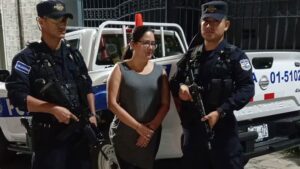On June 5th, as part of their ongoing work focusing on civic space and their UNESCO-funded “Protecting Women Journalists in Africa through Research and Strategic Litigation Project”, RFK Human Rights partnered with the African Freedom of Information Centre (AFIC) to bring together experts on gender-based violence against women journalists in East and West Africa. The consultation connected experts in the field to discuss how GBV against women journalists might be addressed through strategic litigation. Participants addressed challenges from governments, newsrooms, and courts facing women journalists.
The expert consultation began with an emphasis on the importance of moving from researching violence against journalists to concrete action, including litigation. Participants stressed the project’s aim of holding individuals accountable for rights violations and protecting women journalists. They also discussed how gender violence negatively impacts women’s careers, as women journalists facing violence often self-censor or are assigned to less dangerous assignments, limiting their career potential and reporting. Additionally, this self-censorship negatively impacts journalism and civic space for everyone, as women’s unique perspectives are missed.
Ikechukwu Uzoma, RFKHR Staff Attorney for the Africa region, discussed the project, which seeks to understand the scope of violence against women journalists and what protections might exist to seek recourse. He said that understanding and documenting trends is one part of the project. The next step is to apply this research to investigate the role of strategic litigation in protecting women journalists. Uzoma focused on how wider gender structures intersect with other forms of repression, influencing how these attacks are carried out and also what legal responses might be available.
Enjoying this article?
Subscribe to the Justice Roundup newsletter to get more of the latest on human rights advocacy and litigation, delivered straight to your inbox.
Next, RFKHR’s Senior Staff Attorney for Civic Space, Sofía Jaramillo, summarized the project’s research and identified the existing gaps. The project thus far has categorized attacks against women journalists, including online harassment, sexual harassment, physical violence, judicial harassment, and surveillance. She emphasized the need to understand these attacks’ particularities and their gendered dimensions. Another finding from the report is that women journalists face a significant amount of violence within the newsroom from colleagues and supervisors. Violence sometimes comes from news sources, political actors, and anonymous sources as well. Additionally, the prevalence of attacks varies by content area, with politics and conflict reporting having a higher incidence of violence.
Experts shared a summary of the UNESCO journalist safety measures report. The report describes how several states in the region have policies to protect journalists but do not have legislation protecting women specifically. Corroborating Jaramillo’s analysis, the research details how women are uniquely vulnerable, facing harassment from inside and outside the newsroom. The report recommendations include monitoring mechanisms, strengthening reporting structures, and raising awareness.
The discussion then shifted to the potential of strategic litigation. Firstly, experts addressed attacks on media houses and journalists from hostile governments. A participant pointed to government targeting as an example of an issue that might be litigated under freedom of speech and press protections. Government limitations and retribution make journalists feel unsafe, and women are especially vulnerable to tactics such as trailing and other illegal surveillance. Another difficulty is unclear laws that limit accountability for cyber harassment. Oftentimes, these cyber harassment laws are not used to protect victims; rather, they are used to limit speech. Women journalists are stuck in a bind between seeking protection from cyber harassment and also needing their own speech to be preserved. It can be difficult to identify cyber harassment perpetrators, especially given the widespread use of bots. Overall, panelists agreed that litigation can be used to seek redress and clarify existing laws.
Next, participants discussed the internal harassment women journalists encounter within news organizations. One panelist stated that newsrooms do not have clear monitoring programs, and there is little transparency around reporting. They emphasized the importance of education for more robust and accurate reporting and pointed to these reporting mechanisms as a potential entry point for redress and litigation. The lack of transparency for reporting procedures ties into the limited oversight or external accountability at newsrooms- even when incidents are reported, oftentimes perpetrators are not held accountable. Women journalists are frequently expected to tolerate harassment, and their careers are jeopardized if they seek redress. The panelists agreed that harassment and violence within the newsroom connect to other forms of gender discrimination, like the pay gap that exists between men and women in the field. Litigation might be used to enforce clearer policies to support women journalists within newsrooms.
Another challenge for litigation discussed is the long waiting period in regional courts and budgetary difficulties. Even when women journalists might be interested in pursuing litigation, it is a lengthy process, and in the meantime, women journalists remain at risk for further violence.
Hailey Corkery, RFKHR Masiyiwa-Bernstein Legal Fellow, closed out the expert consultation and summarized the conversation, highlighting the potential for strategic litigation to address the prevalence of harassment in newsrooms and media houses, the need for internal reform, the challenge of victim shaming and online violence, and difficulties within the courts themselves.


